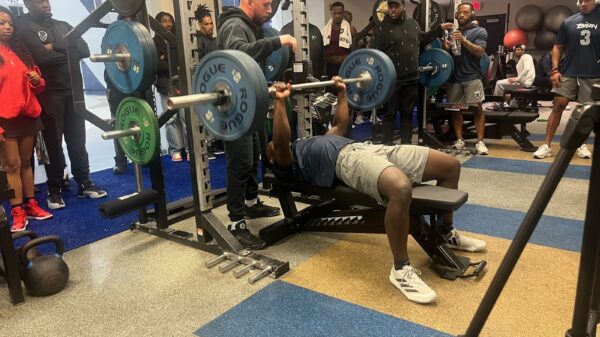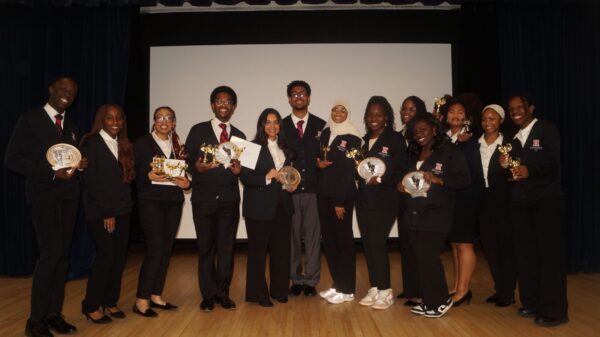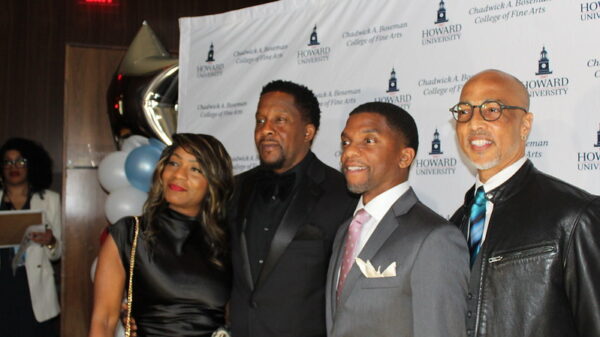
“Style, I think, is in your DNA; it implies originality and courage.” – Iris Apfel
Howard represents a microcosm of how communities and individuals have utilized fashion to express individual identity. Even Grace Wales Bonner, a designer of her own label, drew inspiration from how Howard students dressed during last year’s Homecoming in her Fall/Winter 2024 collection.
What does it mean to be stylish? What does it mean to be fashionable? How does one even develop and communicate a style identity?
The late Iris Apfel, interior designer and fashion tastemaker, known for her “vivacious, idiosyncratic personal style,” made a statement that has arguably been at the center of fashion discourse.
“Being stylish and fashionable are two entirely different things. You can buy yourself into being fashionable. Style, I think, is in your DNA, it implies originality and courage,” she said.
Apfel believes having style is synonymous with “originality.” On the other hand, being fashionable is something anyone can be so long as they have the means, but it doesn’t necessarily express an identity, rather it just shows that one can look at what’s popular and mirror it.
History shows developing distinct styles contributes to communicating identity and values.
The New Romantics were a prominent subculture of the late 1970s and the early 1980s that utilized clothing as a channel of identity. The culture was characterized by theatrical hair and makeup and fashion elements centered on dandyism and glamour.
With their androgynous appearance, they represented a shift away from youth culture in the 70s. They did this through engagement with New Wave, synth-pop music and by defying gender norms.
At the time of the emergence of the New Romantics, general attitudes and values shifted. There was a shift in attitudes toward gender norms, a surge in “radical sexual politics,” and a booming club scene dominating young people’s lives.
The New Romantics used style to communicate their desire to break away from societal norms and introduce a more progressive culture. They represented what it meant to have a style as an extension of themselves and what they desired, exemplifying the difference between being fashionable and having style.
An article by Masterclass titled “Fashion vs. Style: Key Differences Between Fashion and Style” makes the distinction clearer. Style “refers to a person’s particular way of expressing themselves.” In the fashion community, style refers to the “aesthetic choices” around hair, clothing, and accessories.
They continued, “Fashion has to do with trends,” as it concerns itself with reflecting what the popular styles of the time are.
Yomi Adegoke, a British journalist and author, wrote, “If videos killed the radio star, then it was the internet that killed subcultures.” She explained as everyone aims to be different and unique, we’re increasingly becoming more alike. Social media, as she calls it, “homogenizes” people.
She went on to express how what used to be markers of individual expression and cultural touchstones has turned things into “trends over tribes.” She noted that even in language, with words like “yas” or “fam,” both of which originated in Black spaces, have entered mainstream culture. With fashion trends circulating through social media, authenticity has been lost, especially since it can be accessed and co-opted at any point.
The fact of the matter is trends have always been a thing. Individuals and subcultures have always looked to trends as inspiration. A popular example of this is Goth subculture, which emerged out of the rising popularity, or rather trending, of alternative music. The music inspired popular aesthetics such as black nail polish, fishnet leggings, and Victorian-era clothing.
While these aesthetics progressed into popular social trends, it could be argued that these statements through fashion progressed through music and literature as opposed to social media.
The difference between these channels is that exposure through social media shortens trend cycles.
Vice reported that in the age of social media, trends can rise in popularity but last only a few weeks to a month before another aesthetic takes its place. This is entirely different from the past when trends would resurface on an average of 20 years.
This begs the question, does social media’s influence on trends truly take away the authenticity that some have argued?
TJ Sidhu, current brand editor for Burberry and former style and culture editor for “The Face,” wrote that social media’s influence with trends has allowed people to create themselves at any point in time, furthering their mission to develop their style. It also allows them to find their community more easily than people did in the past.
So, if one is dressed head to toe in trending fashion items, does that mean that they have no signature identity? Well, the answer is, who knows? Some view viral internet trends as a result of inauthenticity, whereas others see it as a way to tap into a trend that would’ve otherwise been unknown.
Can one express individuality while still experimenting with trending fashion? Can you be stylish and fashionable?
The answer, based on experiences and understanding of the surrounding discourse found within style, is yes to both. As it is similar to identity, style should be viewed as evolutionary. Who someone is now is likely not going to be who they are five or 10 years from now.
Learning how to find and communicate identity through style starts with an introspective look at individual values. History has shown us that subcultures, like the New Romantics and Goths, centered their style on the culture in which they participated–a physical manifestation of their interests in literature, books, activities, notable figures, practices, behavior, etc.
The most effective way to cultivate your unique style identity is to draw inspiration from trends while understanding who you are and what you identify with, allowing these insights to naturally shape your wardrobe.
The journey will look different for everyone but that’s part of the fun. That’s the aim of fashion–to continue evolving as an individual and letting your clothes speak to that evolution.
Copy edited by Anijah Franklin





























